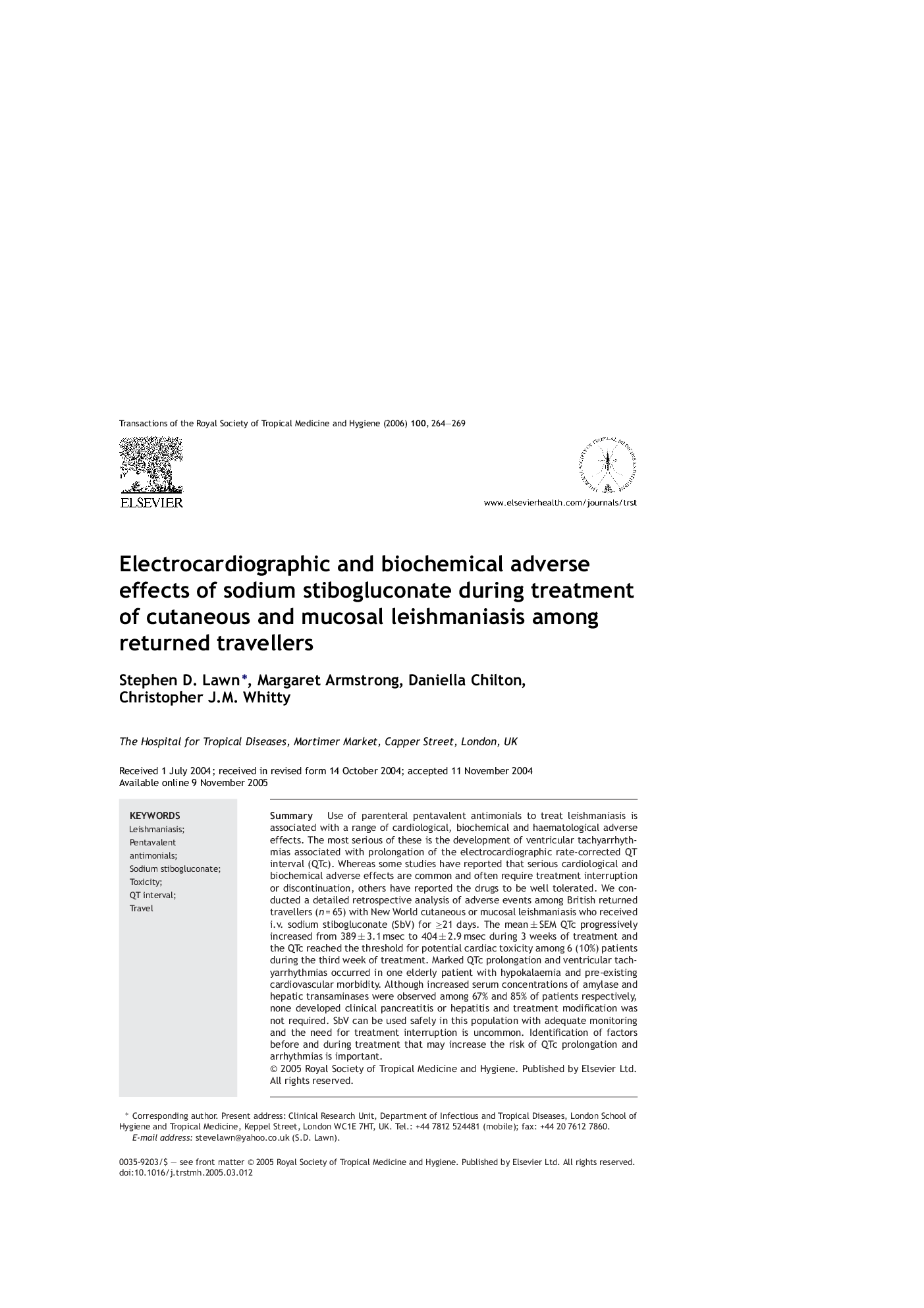| Article ID | Journal | Published Year | Pages | File Type |
|---|---|---|---|---|
| 3421378 | Transactions of the Royal Society of Tropical Medicine and Hygiene | 2006 | 6 Pages |
Abstract
Use of parenteral pentavalent antimonials to treat leishmaniasis is associated with a range of cardiological, biochemical and haematological adverse effects. The most serious of these is the development of ventricular tachyarrhythmias associated with prolongation of the electrocardiographic rate-corrected QT interval (QTc). Whereas some studies have reported that serious cardiological and biochemical adverse effects are common and often require treatment interruption or discontinuation, others have reported the drugs to be well tolerated. We conducted a detailed retrospective analysis of adverse events among British returned travellers (n = 65) with New World cutaneous or mucosal leishmaniasis who received i.v. sodium stibogluconate (SbV) for â¥21 days. The mean ± SEM QTc progressively increased from 389 ± 3.1 msec to 404 ± 2.9 msec during 3 weeks of treatment and the QTc reached the threshold for potential cardiac toxicity among 6 (10%) patients during the third week of treatment. Marked QTc prolongation and ventricular tachyarrhythmias occurred in one elderly patient with hypokalaemia and pre-existing cardiovascular morbidity. Although increased serum concentrations of amylase and hepatic transaminases were observed among 67% and 85% of patients respectively, none developed clinical pancreatitis or hepatitis and treatment modification was not required. SbV can be used safely in this population with adequate monitoring and the need for treatment interruption is uncommon. Identification of factors before and during treatment that may increase the risk of QTc prolongation and arrhythmias is important.
Related Topics
Life Sciences
Immunology and Microbiology
Applied Microbiology and Biotechnology
Authors
Stephen D. Lawn, Margaret Armstrong, Daniella Chilton, Christopher J.M. Whitty,
